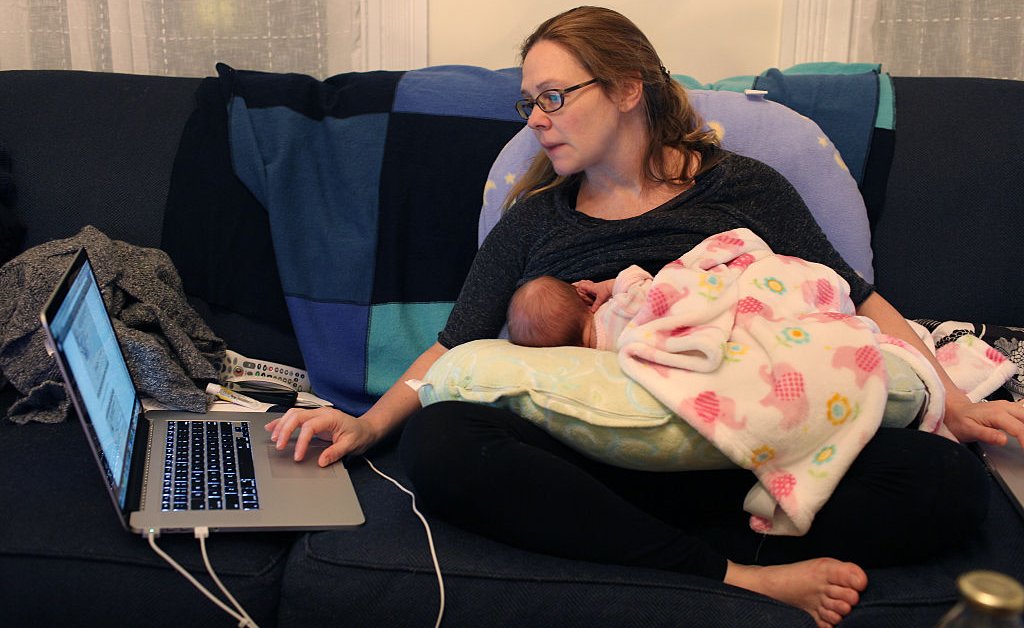The gunman who opened fire on a Fourth of July parade in the Chicago suburb of Highland Park, Ill., seriously considered committing a second attack 120 miles away in Wisconsin, police said Wednesday. After fleeing the scene of the first shooting, the suspect drove to Madison, Wis., where he came across a “celebration” and “contemplated using the firearm he had in his vehicle to commit another shooting,” said Christopher Covelli, Deputy Chief of the Lake County Sheriff’s Office.
Police revealed that the 21-year-old suspect had allegedly been planning the Highland Park attack for weeks and dressed in women’s clothing to ensure he was not recognized. It is not yet clear why he did not go through with the second attack, but Covelli said that “indications are that he hadn’t put enough thought and research into it.”
“We don’t have information to suggest he planned on driving to Madison initially to commit another attack,” Covelli said. “We do believe that he was driving around following the first attack and saw the celebration.”
All seven victims killed in the attack have been identified. They include both parents of a 2-year-old boy who was found alone and rescued by a good Samaritan in the aftermath of the shooting, and grandparents who had gone to the parade with their families.
The suspect legally bought five guns over the course of a year—despite police being called to his home on two separate occasions in 2019, including once for threatening to “kill everyone,” police said Tuesday. At the time, the police removed 16 knives, a sword, and a dagger from his possession and Highland Park police notified Illinois State Police of the incident in a “clear and present danger” report. (The knives were returned to the suspect’s father after he said they belonged to him and were being stored in his son’s room, according to the Illinois State Police.)
However, because Crimo did not have a firearm owner’s identification card, or FOID card or an application pending to receive one, ISP did not become involved.
A few months later, Crimo applied for a FOID card, which is required before being allowed to buy guns in the state of Illinois. Since he was 19 at the time, his application was sponsored by his father and approved by the state police. “The subject was under 21 and the application was sponsored by the subject’s father,” ISP said in a statement. “Therefore, at the time of FOID application review in January of 2020, there was insufficient basis to establish a clear and present danger and deny the FOID application.”
After the gunman opened fire from the rooftop of a building along the parade route Monday morning—emptying at least two 30-round magazines from the rifle and hitting at least 45 people—he climbed down, left the AR-15-style rifle he used and blended into the fleeing crowd, police said.
To conceal his identity and facial tattoos that made him more recognizable, he wore women’s clothing, which allowed him to pass without notice, said Covelli. “He blended right in with everybody else as they were running around, almost as if he was an innocent spectator as well,” said Covelli.
The suspect was charged Tuesday with seven counts of first-degree murder. If convicted, he will face life in prison, without the possibility of parole. “This is the first of many charges to be filed,” said Eric Rinehart, Lake County State Attorney, who added that “dozens more” charges are likely to be filed around each victim.
In addition to the dead, at least 30 people were wounded; victims ranged in age from 8 to 85, police said. The suspect was at large for hours before being arrested—leading to Fourth of July events across the Chicago area being canceled.
It is the latest devastating mass shooting in a public place in America—and one of numerous outbreaks of violence across the U.S. over the holiday weekend.
What happened?

As a Fourth of July parade was underway in Highland Park at 10:14 a.m. Monday, a shooter opened fire from the rooftop of a nearby building. Witnesses said they believed at first that the gunfire was fireworks. Accounts from people at the parade show that the shooting caused mass panic, as parade-goers fled and children were separated from parents.
“There was a small lull and that’s when the horrific sounds of those sonic booms started going off,” Dr. David Baum, an obstetrician from Highland Park, tells TIME. “People quickly realized what was happening when people were screaming ‘bodies down, bodies down.’”
Police responded to the shooting quickly, but the gunman was able to escape because he was in disguise, police said. The suspect walked to his mother’s home nearby, where he borrowed her car and fled.
Baum, whose children and grandchildren marched in the children’s parade earlier in the morning Monday, says he and other doctors and nurses at the parade rushed in to provide medical care to victims until paramedics arrived. He performed chest compressions on a 9-year-old boy who was wounded until first-responders arrived. The boy was later taken to the hospital in critical condition.
Baum doesn’t believe he didn’t anything heroic in trying to save victims—partly because he was unable to save many of the victims he encountered. “I tried to help, but the people who were dead were almost immediately identified as un-resuscitatable. I mean, they had injuries that I saw that were unspeakable,” he says. “The amount of blood that was on the sidewalk was unimaginable.”
Baum says that he’s having a hard time processing what he experienced on Monday now that the adrenaline of the moment has worn off. “Now I feel sort of empty and very sad about what just happened with my kids and what my kids had to live through,” he says.
As the shooter remained at large for hours, Highland Park residents were urged to shelter in place as more than 100 law enforcement officials were called to the scene and dispatched to find the suspect. Suburban communities in Illinois began canceling Fourth of July festivities, urging residents to remain at home while “the threat is still at large”.
On Monday evening, police named 21-year old Robert “Bobby” Crimo III as a person of interest in the case. He was arrested eight hours later in Lake Forest, Ill. after leading police on a chase when an officer attempted a traffic stop. Crimo has yet to be charged in relation to the shooting.
What do we know about the suspected gunman?
Authorities had “a significant amount of digital evidence” that helped identify Crimo as a suspect, according to Christopher Covelli, spokesperson for the Lake County Major Crimes Task Force. The suspect posted music online under a pseudonym, along with music videos that often included animated depictions of mass murder. His music has received millions of plays on streaming platforms, according to CBS Chicago.
The online activity “reflected a plan and a desire to commit carnage for a long time in advance,” Highland Park Mayor Nancy Rotering told NBC’s Today show on Tuesday. Police have not yet identified a motive.
Rotering said she knew the suspect years ago, when she was a Cub Scout pack leader. “He was just a little boy,” she said, “It’s one of those things where you step back and you say, ‘What happened?’ How did somebody become this angry, this hateful to then take it out on innocent people who, literally, were just having a family day out?”
Other parade-goers in the small town also knew of the suspect; Crimo’s father was the owner of a local deli and had run for mayor in 2019. “We are good people here, and to have this is devastating,” the suspect’s uncle, Paul Crimo told CNN.
Police said he bought the rifle used in the shooting legally in Illinois. He left the weapon, described as a high powered rifle “similar to an AR-15,” behind at the scene and federal agents were able to use it, along with surveillance videos from the scene, to identify Crimo as the shooting suspect, Covelli said.
A second rifle was found in the vehicle Crimo was driving when he was stopped by police. Handguns were found at his home. All were legally purchased.
Crimo’s parents released a statement through their attorney, saying, “We are all mothers and fathers, sisters and brothers, and this is a terrible tragedy for many families, the victims, the paradegoers, the community, and our own. Our hearts, thoughts, and prayers go out to everybody.”
Highland Park passed an assault weapons ban in 2013
In the months after the shooting at Sandy Hook elementary school nearly a decade ago, Highland Park passed an ordinance banning AR-15s and AK-47s. The decision was highly contested by residents at the time, the Chicago Tribune reported. A local pediatrician and the Illinois Rifle Association sued the city, with the decision ultimately upheld by the U.S. Supreme Court.
The suspect used a “high-powered rifle” that was “similar to an AR-15,” police said Tuesday. They would not say whether the suspect gave a Highland Park address when buying the gun, or where exactly the gun store was located. Another rifle and handguns were recovered in subsequent searches of the suspect’s vehicle and home.
Rotering told National Public Radio that the suspect violated the city’s local ban on assault weapons. “Nationally, we need a collaboration across our states, across our municipalities,” she said. “We did what we could within the confines of current, existing law. We need our nation’s leaders to take necessary steps to prevent further carnage in people’s hometowns.”
Who are the victims?
There were seven people killed in the shooting and nearly 40 injured, including children as young as 8, police said. Five of the victims died at the scene of the shooting, while two died at the hospital.
Highland Park Hospital admitted 25 people with gunshot wounds, 19 of whom were treated and sent home, according to Dr. Brigham Temple, medical director of emergency preparedness. He said that “four or five” of those hospitalized were children, with injuries varying. “Some of them were minor,” Temple said at a press conference Monday. “Some of them were much more severe.”
All seven victims have been identified. They are:
- Katherine Goldstein, 64, of Highland Park
- Irina McCarthy, 35, of Highland Park
- Kevin McCarthy, 37, of Highland Park
- Jacquelyn Sundheim, 63, of Highland Park
- Stephen Straus, 88, of Highland Park
- Nicolas Toledo-Zaragoza, 78, of Morelos, Mexico
- Eduardo Uvaldo, 69, of Waukegan
“Jacki” Sundheim, a member of the North Shore Congregation Israel in Glencoe, Ill., was among those killed. “Jacki’s work, kindness and warmth touched us all,” the synagogue wrote in a statement. “There are no words sufficient to express the depth of our grief for Jacki’s death and sympathy for her family and loved ones.”
Toledo-Zaragoza attended the parade with his family. “What was [supposed] to be a fun family day turned into a horrific nightmare for us all,” his granddaughter, Xochil Toledo, wrote in a fundraising message. “As a family we are broken, and numb.”
Kevin and Irina McCarthy were identified as the parents of a 2-year-old boy who was found and taken to safety by strangers in the midst of the shooting. The boy, Aiden, is now an orphan, and will be raised by other family members, according to a GoFundMe campaign that has raised more than $350,000.
Goldstein was mourning the passing of her mother when she attended the parade with her daughter, Cassie, as a way to get out of the house and have some fun. “She was just a good mom, and I got 22 years with her,” Cassie Goldstein told NBC News. “And I got to have 22 years with the best mom in the world. … I did everything with her. She was my best friend.”
At 88, Straus still worked as a financial advisor at a brokerage firm in Chicago, and typically joined his children and grandchildren for dinner on Sunday evenings. Straus “should not have had to die this way,” his niece, Cynthia Straus told the New York Times.
Uvaldo and his family attended the parade every year, according to a fundraising page set up by his granddaughter, Nivia Guzman. The tradition is now tainted with the loss of Uvaldo and the injuries that other family members sustained during the attack. “This year was different, this year was filled with fear, sadness, and tragedy,” wrote Guzman.
A violent July 4 weekend
The shooting in Highland Park was the largest holiday weekend attack, but not the only one to stain Fourth of July festivities. Since Friday, there have been 18 mass shootings in communities across the nation, most of them on Monday, according to the Gun Violence Archive, which defines a mass shooting as an incident where four or more people are shot or killed, not including the shooter.
The pattern of mass shootings continues to haunt a nation still grieving from the shooting at an elementary school in Uvalde, Texas where 19 children and two teachers were killed; and the shooting at a Buffalo, N.Y. supermarket where a gunman—who was allegedly driven by racist intent—shot and killed 10 Black people.
Less than 12 hours before the Highland Park shooting on Monday, five people were injured in Chicago’s south side, roughly 35 miles away. In the city of Chicago alone, at least 57 people had been shot over the weekend, nine of them fatally, according to NBC Chicago. At a Fourth of July block party across the state line from Chicago in Gary, Ind., a shooting left three people dead and seven wounded.
In Philadelphia, two police officers were shot near the Philadelphia Museum of Art on Monday night. In Minneapolis, eight people were injured in a shooting in Boom Island Park on Monday. One person was killed and four were injured in Kenosha, Wis. Another person was killed in Sacramento, Calif., and four more were injured, when shots were fired as a club was closing early Monday morning. Six more were injured in a shooting in Richmond, Va., and another four were injured in a shooting in Kansas City, Mo.
Correction, July 5
Because of an editing error, the original version of this story misstated the number of victims in the Uvalde, Texas, shooting. It was 19 children, not 17.
- Governor Gretchen Whitmer on Her Fight for Abortion Access in Michigan
- Inside the War on Fake Consumer Reviews
- Column: Europe's Refugee Crisis Is Going to Get Worse
- How Lawmakers Are Trying to Protect Abortion Data Privacy
- The Surprising Thing That Could Help Ease Inflation
- Finding the American Dream in Canada
- The Safest Sunscreens to Buy—and Which Ingredients to Avoid
- Fact-Checking 8 Claims About Crypto’s Climate Impact
- How Grief Upsets Your Gut Health
- Who Could Replace Boris Johnson As U.K. Prime Minister?
"time" - Google News
July 07, 2022 at 03:31AM
https://ift.tt/hIjOBPn
Highland Park Shooting: Latest Updates on Victims, Suspect | Time - TIME
"time" - Google News
https://ift.tt/i2rePoI








